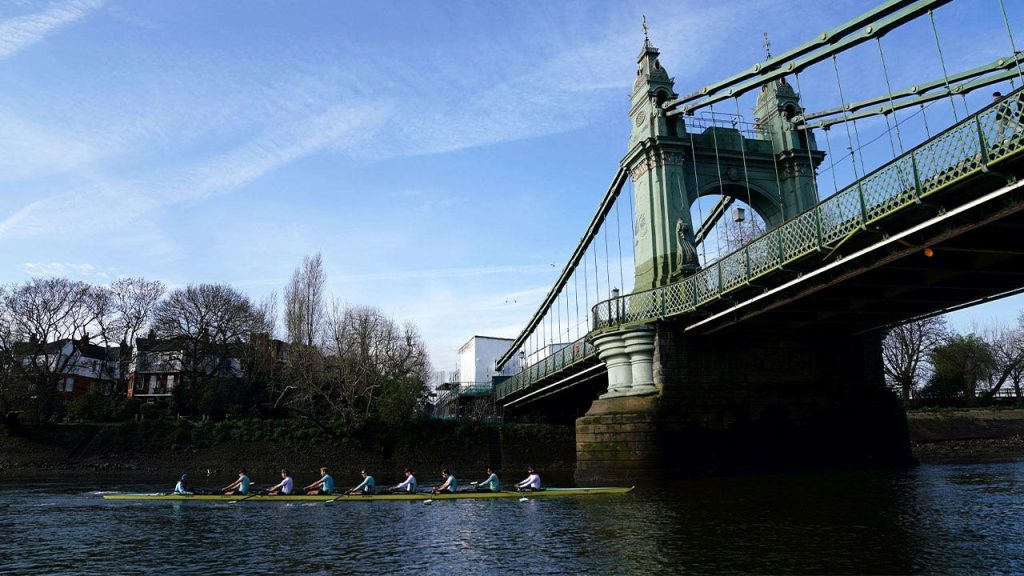Jumping into London’s River Thames has been a traditional celebration for the winning crew of the Boat Race between universities Oxford and Cambridge. However, recent testing by the River Action campaign group found high levels of E.coli along a stretch of the Thames in southwest London, where the race will take place. E.coli bacteria can cause a range of health issues, including urinary tract infections and vomiting, and exposure to contaminated water can be dangerous. As a result, precautions are being taken for this year’s race, such as advising competitors to cover cuts and grazes, avoid swallowing river water, wear suitable footwear, and clean equipment thoroughly. Precautions, such as a cleansing station at the finish area, have also been put in place.
The Boat Race, first held in 1829, is one of the oldest sporting events in the world, attracting large crowds along the 4.2-mile stretch of the Thames. However, recent tests conducted by River Action found high levels of E.coli in the water near Hammersmith Bridge, with an average of 2,863 E.coli colony forming units (CFU) per 100ml of water. The Environment Agency deems it unsafe to swim in water with 1,000 CFU or higher, indicating the potential risks associated with the polluted water. The source of pollution is believed to be sewage discharges from utility company Thames Water, prompting calls for improved water quality to ensure the safety of rowers and other water sports enthusiasts.
World champion rower Imogen Grant, who has won the Boat Race with Cambridge three times, has expressed concern over the health risks rowers face due to contaminated water. Improving water quality across the country is seen as a priority, with testing providing a clear picture of the challenges that need to be addressed. River Action’s testing locations suggest that sewage discharges from Thames Water are a significant source of pollution in the Thames and its tributaries. While Thames Water acknowledges the need to reduce unnecessary discharges and improve the health of rivers, efforts to address the issue are ongoing.
Organizers of the Boat Race have expressed support for the research conducted by River Action and have implemented precautionary measures to raise awareness of the risks associated with entering the contaminated water. Competitors from both universities have been advised on safety measures to protect themselves from E.coli exposure, including covering cuts, avoiding swallowing river water, wearing appropriate footwear, and cleaning equipment thoroughly. With the race being a historic tradition and a major event attracting thousands of spectators, ensuring the safety and well-being of participants is crucial.
The importance of addressing water pollution and improving water quality for rowers and other recreational users of rivers and lakes is highlighted by the findings of the E.coli testing conducted by River Action. The potential health risks associated with exposure to contaminated water underscore the need for continued efforts to reduce pollution and enhance water quality standards. While steps are being taken to mitigate the risks for this year’s Boat Race, ongoing monitoring and improvement initiatives are essential to safeguard the health and safety of all those who engage in water sports and activities. Collaboration between organizations, such as River Action and Thames Water, is vital to address the sources of pollution and work towards cleaner and safer waterways for everyone to enjoy.


